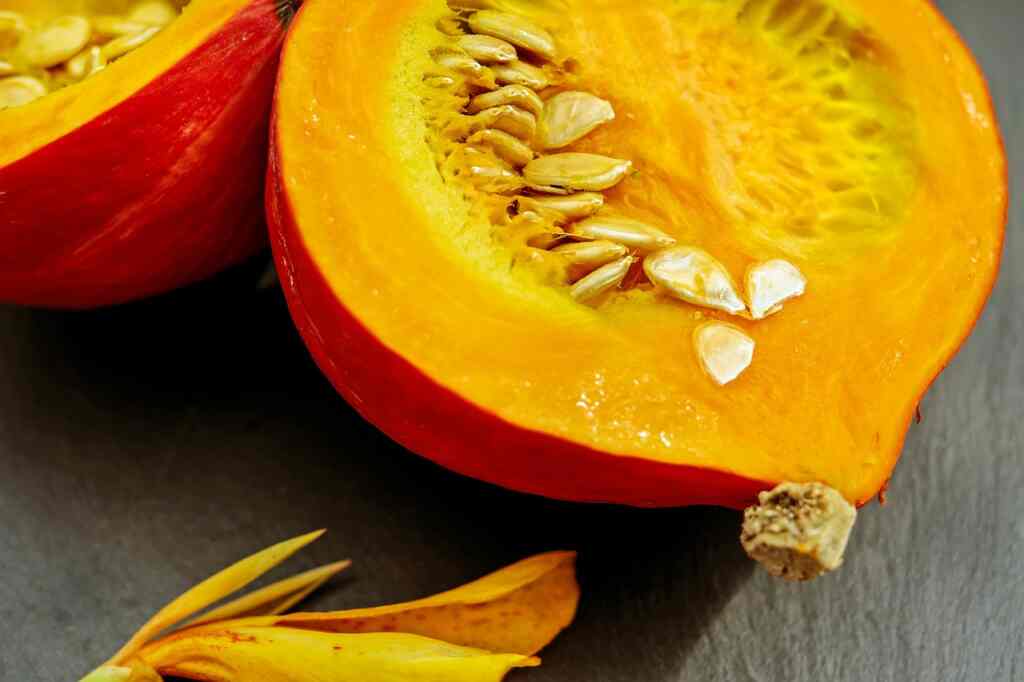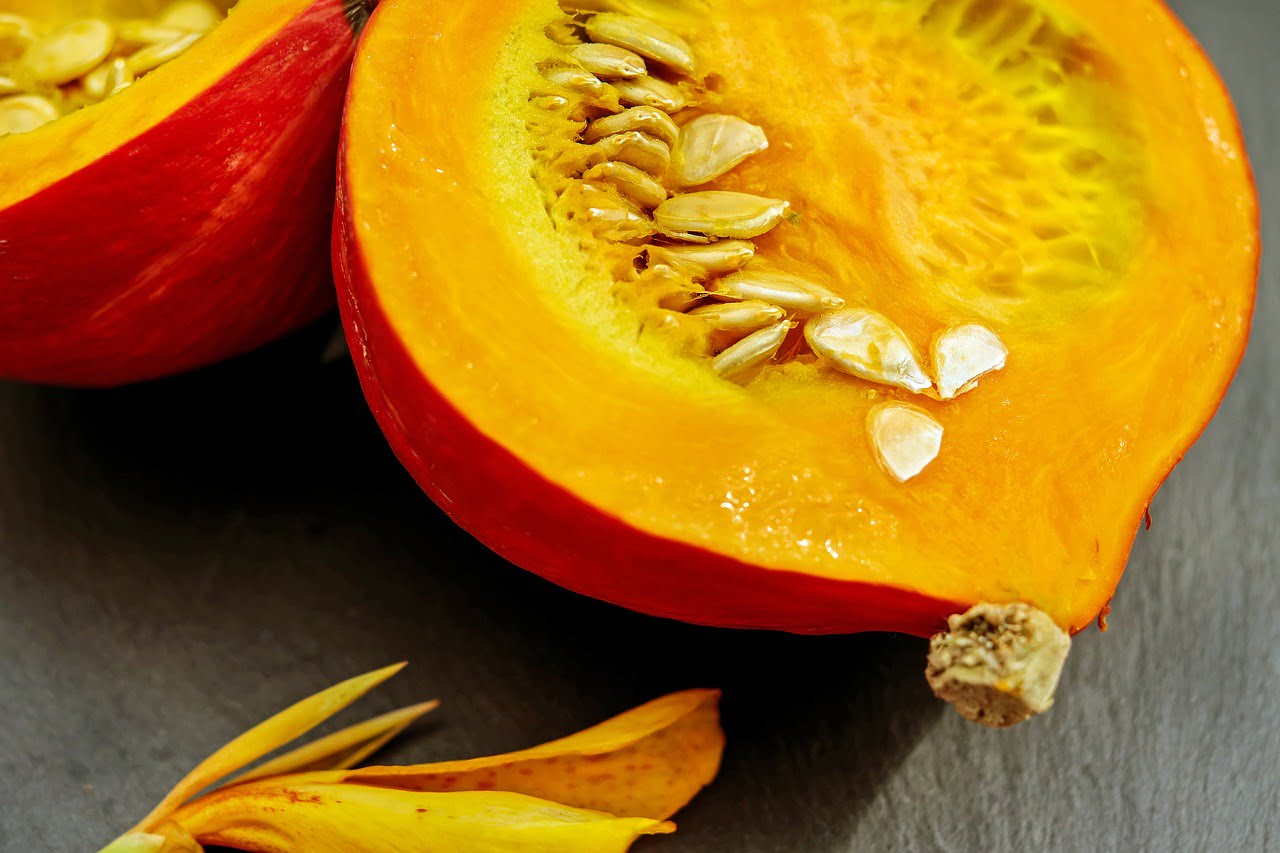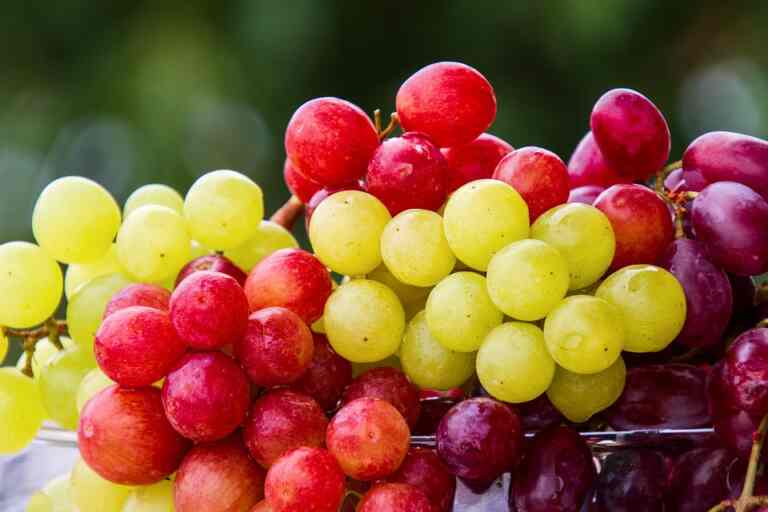Can we eat pumpkin skin?
Can we eat pumpkin skin? Yes, you can eat pumpkin skin. Pumpkin skin is edible and can be consumed in various culinary preparations. It is a good source of fiber and contains several nutrients, so it can be a healthy addition to your diet. However, the texture of pumpkin skin can be tough, so it is often recommended to cook or roast it to make it more palatable.
Roasted pumpkin skin, in particular, can be crispy and flavorful, making it a popular choice for many dishes. When cooking or eating pumpkin skin, be sure to wash it thoroughly to remove any dirt or contaminants.
Nutritional Value of Pumpkin Skin
Pumpkin skin, like the flesh of the pumpkin, offers a range of nutritional benefits. Here are some key components of the nutritional value of pumpkin skin:
- Dietary Fiber: Pumpkin skin is rich in dietary fiber, which aids in digestion, helps maintain bowel regularity, and can contribute to a feeling of fullness, which may assist with weight management.
- Vitamins: Pumpkin skin contains various vitamins, including vitamin A, vitamin C, and some B vitamins. Vitamin A is essential for eye health and immune function, while vitamin C is an antioxidant that supports the immune system and skin health.
- Minerals: It provides minerals such as potassium and small amounts of iron, calcium, and magnesium. Potassium is crucial for maintaining proper muscle and nerve function and regulating blood pressure.
- Antioxidants: Pumpkin skin contains antioxidants, such as beta-carotene, which gives it its orange color. Antioxidants help protect cells from damage caused by free radicals and may have various health benefits.
- Phytonutrients: It contains phytonutrients like lutein and zeaxanthin, which are essential for eye health and may reduce the risk of age-related eye diseases.
- Low in Calories: Pumpkin skin is low in calories, making it a suitable addition to a calorie-conscious diet.
- Hydration: It has a high water content, which can contribute to overall hydration when consumed.
While the nutritional value of pumpkin skin is noteworthy, it’s essential to ensure that you properly wash and prepare it before consumption, as it may have dirt or contaminants on its surface. Additionally, cooking methods like roasting or baking can make pumpkin skin more palatable and easier to digest while preserving its nutritional content.
Benefits of Eating Pumpkin Skin
Eating pumpkin skin can offer several benefits due to its nutritional content. Here are some of the potential advantages of incorporating pumpkin skin into your diet:
- Increased Fiber Intake: Pumpkin skin is rich in dietary fiber, which can help improve digestive health by promoting regular bowel movements and preventing constipation.
- Nutrient-Rich: It contains vitamins like vitamin A and vitamin C, which are essential for immune system support and overall health. Vitamin A is particularly important for maintaining good vision.
- Antioxidant Protection: Pumpkin skin contains antioxidants, such as beta-carotene, which can help protect your cells from damage caused by free radicals. Antioxidants are associated with a reduced risk of chronic diseases and may promote healthy aging.
- Eye Health: The presence of lutein and zeaxanthin in pumpkin skin is beneficial for eye health. These antioxidants may reduce the risk of age-related eye conditions like macular degeneration.
- Low in Calories: Pumpkin skin is relatively low in calories, making it a suitable addition to a calorie-controlled diet for those looking to manage their weight.
- Hydration: Due to its high water content, pumpkin skin can contribute to your daily hydration needs when consumed.
- Versatile Ingredient: Pumpkin skin can be used in various culinary applications, adding texture, flavor, and nutritional value to dishes like soups, salads, and roasted vegetables.
- Reduced Food Waste: Eating pumpkin skin is an eco-friendly choice, as it helps reduce food waste and makes use of the entire vegetable.
It’s important to note that while pumpkin skin offers these benefits, individual preferences and tolerances may vary. Some people may find the skin tough or less palatable, so the method of preparation and cooking can significantly impact its taste and texture. If you choose to include pumpkin skin in your meals, be sure to wash it thoroughly to remove any dirt or contaminants.

Risks and Considerations
While there are potential benefits to eating pumpkin skin, there are also some risks and considerations to keep in mind:
- Texture and Taste: Pumpkin skin can be tough and may have a slightly bitter taste, which some individuals may find unappealing. Cooking methods like roasting or baking can help improve the texture and flavor.
- Pesticide Residues: If the pumpkin was conventionally grown and not organic, there is a possibility of pesticide residues on the skin. Thoroughly washing and peeling the pumpkin can help mitigate this risk.
- Allergies and Sensitivities: Some individuals may be allergic to certain components of pumpkin or may have sensitivities to the skin. It’s essential to be aware of any adverse reactions when incorporating pumpkin skin into your diet.
- Digestive Sensitivity: The fiber content in pumpkin skin can be beneficial for some but may cause digestive discomfort, such as gas or bloating, in others, especially if consumed in large quantities.
- Contaminants: Like any vegetable, pumpkin skin can harbor contaminants, including dirt, bacteria, or pesticides. Proper washing and preparation are crucial to minimize these risks.
- Food Safety: Pumpkin skin should be washed thoroughly before consumption to remove any surface dirt or contaminants. It should also be cooked or roasted to reduce the risk of foodborne illnesses.
- Individual Preferences: Some individuals may prefer to remove the skin due to its texture or taste, and that’s entirely acceptable. The choice to eat pumpkin skin should align with personal preferences and dietary tolerances.
Overall, while pumpkin skin can offer nutritional benefits and add variety to your meals, it’s essential to consider these risks and individual factors when deciding whether to include it in your diet. Proper washing, cooking, and portion control can help mitigate potential concerns while allowing you to enjoy the advantages of this edible vegetable skin.
How to Prepare and Eat Pumpkin Skin
Preparing and eating pumpkin skin can be a nutritious and flavorful addition to your meals. Here’s how to prepare and eat pumpkin skin:
1. Choose the Right Pumpkin:
- Select a pumpkin with fresh, unblemished skin. Ideally, choose organic pumpkins or wash conventionally grown pumpkins thoroughly to remove potential pesticide residues.
2. Wash Thoroughly:
- Rinse the pumpkin skin under cold running water to remove any dirt or contaminants. Use a scrubbing brush or cloth to ensure it’s clean.
3. Cut and Remove Seeds:
- Cut the pumpkin into your desired shape or size. For smaller pieces, you can slice the pumpkin into thin strips or cubes. Scoop out and discard the seeds and stringy pulp from the center.
4. Cooking Methods:
- Roasting: Roasting pumpkin skin is a popular method. Toss the cleaned and sliced skin with olive oil, salt, and your preferred seasonings. Spread it on a baking sheet and roast in a preheated oven at 375°F (190°C) for about 15-20 minutes or until it becomes crispy.
- Boiling: Pumpkin skin can be boiled in salted water until it becomes tender. This can be used as an ingredient in soups or stews.
- Pan-Frying: You can also pan-fry pumpkin skin with your favorite seasonings until it becomes crispy and golden brown.
5. Incorporate into Dishes:
- Once cooked, you can incorporate pumpkin skin into various dishes. Here are some ideas:
- Add roasted pumpkin skin as a crunchy topping for salads or as a side dish.
- Include boiled or pan-fried pumpkin skin in soups, stews, or curries for added texture and flavor.
- Mix crispy pumpkin skin into pasta dishes, rice bowls, or grain salads.
- Use it as a garnish for savory dishes or as a nutritious snack.
6. Experiment with Flavors:
- Pumpkin skin pairs well with a variety of seasonings and spices, such as garlic, paprika, cumin, or Parmesan cheese. Experiment with different flavor combinations to suit your taste.
7. Be Mindful of Texture: Keep in mind that the texture of pumpkin skin can be somewhat tough, especially if not cooked properly. Adjust cooking times and methods to achieve your desired texture.
8. Enjoy Responsibly: While pumpkin skin offers nutritional benefits, it’s essential to consume it in moderation and be aware of your own preferences and tolerances.
By following these steps, you can prepare and enjoy pumpkin skin as a nutritious and versatile part of your meals, adding flavor, texture, and valuable nutrients to your dishes.
Frequently Asked Questions About Pumpkin Skin
“Frequently Asked Questions About Pumpkin Skin” is a section that provides answers to common queries and concerns regarding the consumption and preparation of pumpkin skin. Here are some frequently asked questions and their answers:
1. Is pumpkin skin safe to eat?
- Yes, pumpkin skin is safe to eat. However, it should be properly washed to remove any dirt or contaminants, and cooking methods like roasting, boiling, or pan-frying can enhance its palatability and texture.
2. Is pumpkin skin nutritious?
- Yes, pumpkin skin is nutritious and contains dietary fiber, vitamins (e.g., vitamin A and vitamin C), antioxidants, and minerals that offer various health benefits.
3. Can I eat pumpkin skin raw?
- While you can technically eat pumpkin skin raw, it may be tough and less palatable in its raw form. Cooking or roasting it can improve its taste and texture.
4. Are there any risks associated with eating pumpkin skin?
- Risks may include potential pesticide residues on conventionally grown pumpkins and individual sensitivities to the skin’s texture or taste. Proper washing and cooking can mitigate these concerns.
5. Can I use pumpkin skin in cooking and recipes?
- Yes, you can incorporate cooked pumpkin skin into various dishes, including salads, soups, stews, pasta, and as a crunchy garnish. It adds texture and flavor to your recipes.
6. How should I wash and prepare pumpkin skin?
- Thoroughly wash the pumpkin skin under running water to remove dirt and contaminants. Cut it into the desired shape or size, and then roast, boil, or pan-fry it as needed for your recipe.
7. Can I eat pumpkin skin if I have dietary sensitivities or allergies?
- If you have known dietary sensitivities or allergies related to pumpkin or its skin, it’s advisable to consult with a healthcare professional before including it in your diet.
8. Does pumpkin skin have any health benefits?
- Yes, pumpkin skin can contribute to digestive health due to its dietary fiber content and provide essential vitamins and antioxidants that support overall well-being.
9. Is it necessary to peel pumpkin skin before eating the flesh?
- Peeling pumpkin skin is not necessary, but it’s a matter of personal preference. If you enjoy the taste and texture of the skin, you can leave it intact when cooking pumpkin flesh.
10. How can I make pumpkin skin more flavorful? – You can enhance the flavor of pumpkin skin by seasoning it with various spices, herbs, or seasonings of your choice before cooking. Experiment with different combinations to suit your taste.
These FAQs aim to provide clear and practical answers to common questions about pumpkin skin, helping individuals make informed decisions about incorporating it into their culinary repertoire.
Conclusion: Making Informed Choices About Pumpkin Skin in Your Diet
In conclusion, making informed choices about including pumpkin skin in your diet is a matter of balancing its potential benefits with your personal preferences and dietary considerations.
Pumpkin skin is edible and offers several advantages, including its fiber content, vitamins, antioxidants, and potential contributions to digestive health. However, it may have a tough texture and a slightly bitter taste that not everyone appreciates.
To make the most of pumpkin skin in your diet, follow these guidelines:
- Choose and Prepare Carefully: Select fresh pumpkins, wash the skin thoroughly, and consider cooking methods like roasting, boiling, or pan-frying to enhance its flavor and texture.
- Be Mindful of Risks: Be aware of potential risks, such as pesticide residues or individual sensitivities, and take appropriate precautions, including washing and proper cooking.
- Experiment with Flavors: Experiment with seasonings and spices to find flavor combinations that suit your taste and make pumpkin skin more appealing.
- Moderation is Key: Consume pumpkin skin in moderation, taking into account your dietary preferences and tolerances.
Ultimately, the choice to eat pumpkin skin should align with your dietary goals and culinary preferences. By making informed choices, you can enjoy the nutritional benefits and unique culinary possibilities that pumpkin skin offers while ensuring a safe and enjoyable dining experience.
Related Posts
This article is reviewed by Russel, before publishing. If you have any doubt, you can contact us or consult with your nearby doctor. Remember, in medical matters, there is no same advice, cure, and medicine for all.







